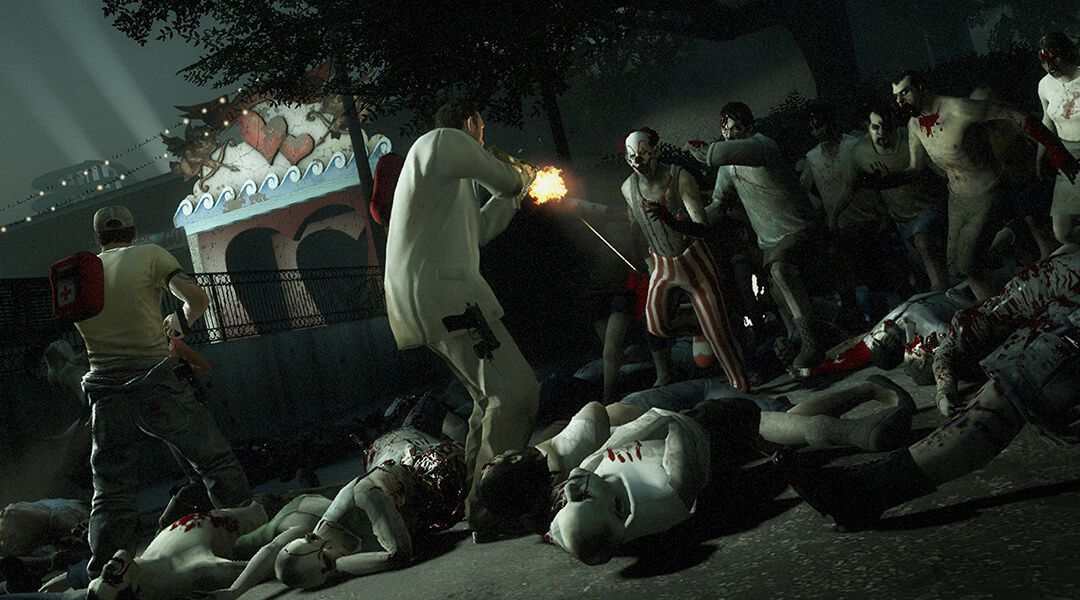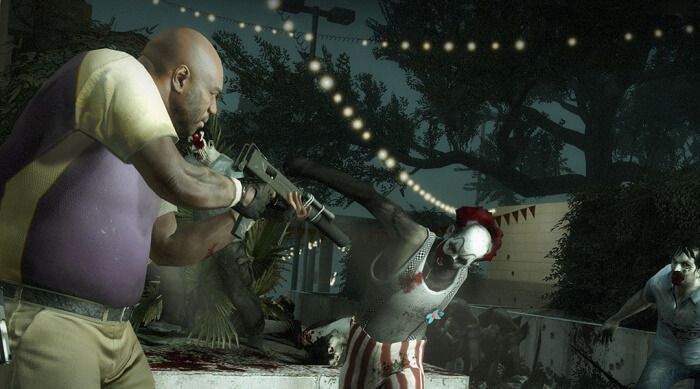
Left 4 Dead 3 Should Stick With What Works
By Rob Gordon 26 January 2016
Left 4 Dead 3 may or may not be in the process of development, but it’s important that Valve understands the risks of changing a winning formula too much.
It may only be the beginning of 2016, but we have already been on the receiving end of the first Valve sequel rumor of the year. For once, this hasn’t been the result of another whisper of the much-wanted Half Life 3, although fans of the seminal FPS franchise may enjoy the recent announcement of a fan-made follow-up to Half-Life 2. Instead, this first rumor revolves around another of Valve’s beloved game series: Left 4 Dead.
According to reports that appeared this month, Valve is working on a third Left 4 Dead game. Already, a number of alleged details have been released about the project, including a new cast of characters and six separate campaigns. Even though the rumor is very far from being verified, it hasn’t stopped fans of the co-op zombie shooter series from getting excited about what Valve may or may not have in store for the future.
Already, wish lists are being written up on exactly what features should be included in Left 4 Dead 3. Whether it be a host of new characters, a return of some old favorites, or the addition of some refreshing new game modes, the gaming community is ready to take on the zombie horde once more. However, there’s a debate to be made about exactly just how much Left 4 Dead should change between its second and third iterations.

Since Left 4 Dead 2 was released in 2009, plenty has changed in gaming. However, looking at the most popular multiplayer games on the market, a huge number of them have been around for many years already. Counter-Strike’s latest iteration is an ever-present force on Steam, whilst League of Legends and Team Fortress 2 pull in huge numbers of players. Even World of Warcraft still has the population of a small country behind it, in spite of its declining user base.
Meanwhile, plenty of pretenders to the crown have fallen by the wayside. Multiplayer games like Titanfall had a burst of popularity, but the armies of players soon diminished, moving on to the next big thing or returning to old favorites. In short, there are very few entirely new games that have taken up strong positions in the world of multiplayer.
There are, of course, a few standout recent releases. Destiny has pulled in a huge number of players, helped by a tremendously successful launch period and mechanics that seem to be a machine for addictive gameplay. Meanwhile, Call of Duty remains consistently in the running, although the series seems to stay close to the path of classic predecessors such as Modern Warfare 2, which still pulls in thousands of players a day.
The question, then, is what separates these games from their failed peers. What it comes down to is the level of simplicity. Most successful multiplayer games have one simple central mechanic on the surface, no matter how complex the specifics or the metagame become. Multiplayer games often get into trouble when a complex concept or structure is required for it to function as a fun video game.

A case in point is Evolve. The asymmetrical multiplayer shooter has close ties to Valve’s zombie shooter, as the title was created by Turtle Rock, the developer of the original Left 4 Dead. Evolve was one of the most anticipated games of 2015, with a huge marketing push behind it, but the game’s following petered out incredibly quickly.
A lot was blamed for the game’s failing, including pushing an entire store’s worth of expensive downloadable content that was not wanted – nor needed. However, the root of the matter was the title’s gameplay. Evolve was only ever set to work under a specific set of criteria, and when these could not be achieved the sheer level of fun greatly diminished.
Meanwhile, Team Fortress, Counter-Strike, World of Warcraft, and League of Legends all have an instant pick-up-and-play design to them. Underneath, of course, there is a huge level of depth to the games that engages players on several levels, encouraging them to continue playing. That base hook is quick to sink in, and it demonstrates that developers should try to avoid overcomplicating matters.

The first two Left 4 Dead games are perfect examples of instant fun in a multiplayer game, with the co-op nature of the titles making them potentially even more rewarding to newcomers than a lot of their peers. The formula of a team players facing a frantic journey for survival against a constantly-adapting zombie horde works incredibly well, and it’s one that Valve would do well to replicate in future sequels.
By no means should Left 4 Dead 3 be little more than an add-on pack for the games that came before it though. In fact, that was one of the main criticisms of Left 4 Dead 2 when it was released in 2009. Launching just a year after the original game, it felt a little too similar to the first Left 4 Dead.
Instead, Valve should aim to build upon what made the series great in the first place. Alongside the inevitable graphical upgrade, Valve will be considering a number of other options, including bumping the number and variety of the maps on show, making sure that players remain excited about Left 4 Dead 3. Given the upcoming launch of the HTC Vive headset, players shouldn’t be surprised to see VR support on the table as an added bonus either.
Left 4 Dead has always been a series with a great level of longevity, and overcomplicating the gameplay could mean that vital moreish quality is lost. If Valve is indeed on its way to releasing Left 4 Dead 3, then it should pay heed to this and not rock the boat too much. If the development of the game is played right, Valve may well be on their way to making another addition to the list of seemingly timeless multiplayer games.
Sources: Steam, SteamCharts
